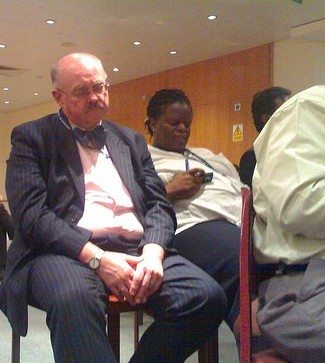A friend sent me this link to an NPR story about the mind-numbing effects of powerpoint presentations. NPR interviewed various groups including physicists working on the Large Hadron Collider, CEOs at fortune 500 companies, and generals at the pentagon. Some of those interviewed have put an outright ban on powerpoint presentations at their meetings because they kill discussion and put people to sleep. If people have stopped showing up for your meetings and simply ask for a copy of your slides, maybe this is the reason.

One of my all time favorite satirical critiques of powerpoint presentations is the powerpoint Peter Norvig created in January 2000 of Lincoln’s Gettysburg Address. Read the intro before you “click to start” and make sure you click the next button to take you through all six slides and see the “speaker’s notes” at the end. Peter also explains here the genesis of the powerpoint and how Edward Tufte and others later made it famous.
My strategy for using powerpoint is to try to use one single slide to frame a strategic discussion. The slide is primarily a graphic with as little text as possible. The idea is that you speak to the group using that graphic as a common point of reference and ask others to do the same. Better yet, draw your graphic on the white board and modify it and annotate it throughout the discussion so that it evolves to reflect the points people are making as they discuss the challenges and opportunities.
The beauty of the single graphic/one slide approach is that it boils the idea down to its essence. Since it is impossible to cover every angle in a single slide, you have the opportunity to engage with the group about how they interpret the graphic almost as a kind of Rorschach test. Participants can actually explain how they “see” the problem and solutions and you can discuss the similarities and differences.
If you are determined to stick with full scale powerpoint presentations, at least have a look at Garr Reynold’s Blog, Presentation Zen. Then challenge yourself to use as little text as possible in your next powerpoint slide deck so you have to speak to the group about the images on the slides rather than reading a speech from boring bullet points.
How often have you heard a presenter stand up and say, “I want this to be an interactive session,” and then proceed to read 30 slides of bullet points while you sit in the dark literally and figuratively. We can do better than that. Of course, if you don’t want a discussion in the first place, just send your powerpoint out to the group as an email attachment and save yourselves a meeting.
One other tip: If you are leading a discussion focused on the graphic on the whiteboard, try sitting down with the rest of the group occasionally to look at the graphic from their perspective. This shifts the focus from you to the topic the group is discussing.

2 responses to “Searching for Alternatives to Death by Powerpoint: The Single Slide Strategy”
I’d like to just say yes, here, Giles . . . but there are some stories that are just too big and complex for one slide. I think the world needs a middle ground, something between a 10 page options paper and a 30 slide deck.
My rule of thumb is about 12 slides, mostly images with some words on them, and LOTS of content in the notes. And completely done in 20 minutes. And, more and more, I’m urging the presenters to run through their presentation with me the day before for practice and feedback . . .
That’s the TED model which seems to work for them, so why not.